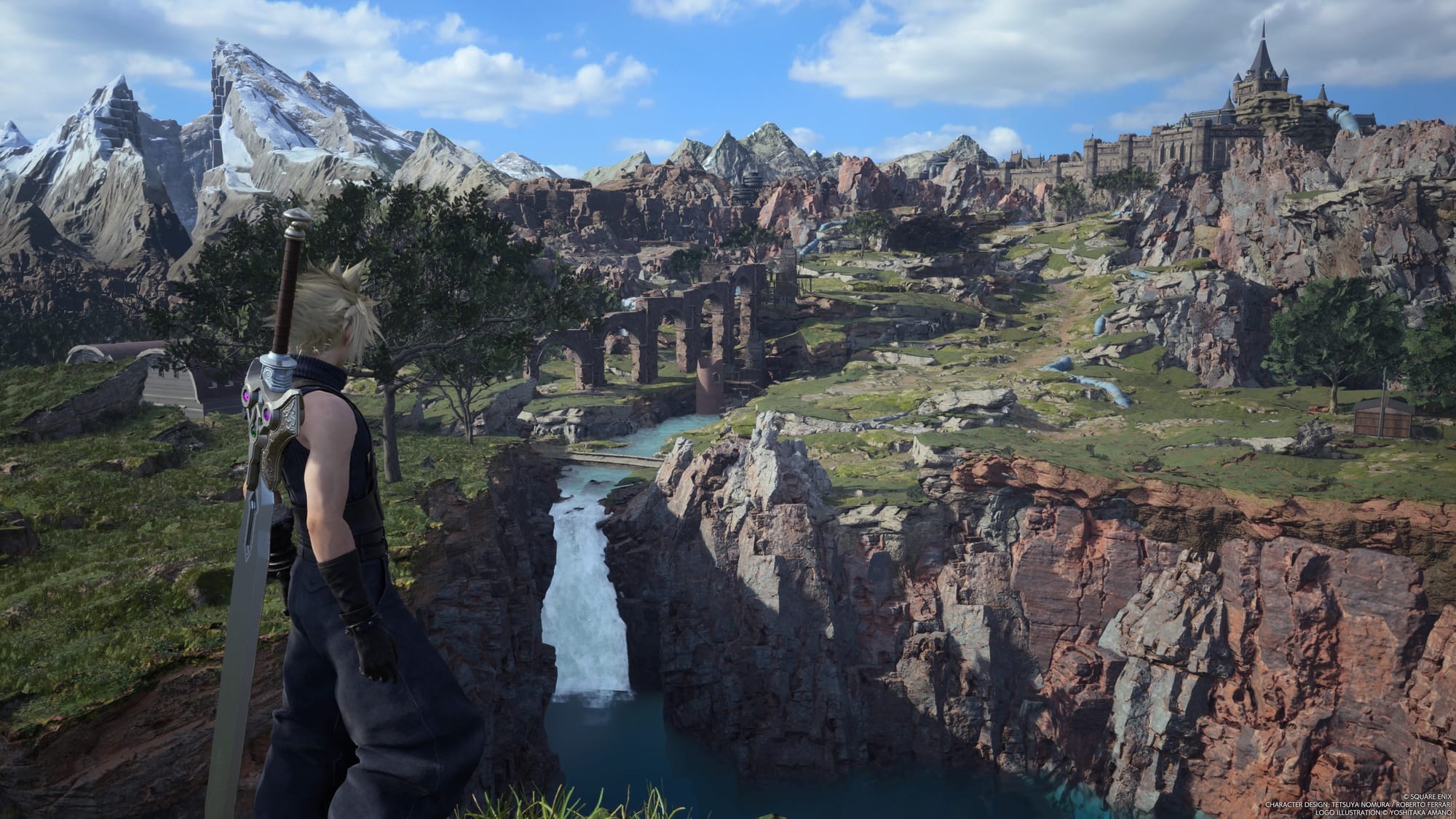This article includes a few spoilers on Rebirth’s story and the 1997 original’s plot.
In the original Final Fantasy VII, the main character Cloud Strife tells his friends the story of how he met the game’s villain, Sephiroth. Soon after, the group sets off in pursuit of Sephiroth and finds a sign of his presence: an enormous snake, run through by the jagged point of a broken tree trunk, blood smeared over its scales and its head lolling backward in death. Earlier, this same hulking serpent was so overwhelmingly powerful that the heroes could only run from it. One of the party looks up at its towering final repose and asks, “Did Sephiroth … do this?” Lightning crashes. The sense of menace is operatic in scale.
In the second part of the Final Fantasy VII remake series, this year’s Rebirth, the scene plays out differently. Cloud and his friends encounter the giant snake and battle with it as part of a prolonged action sequence. It has a manageable health bar and an elemental weakness, but Cloud nearly drowns in the swamp at the end of the battle. He’s saved from death as part of a reality-bending scene where Sephiroth appears. When Cloud comes to, the snake is again stabbed through the neck and its giant body is looped around a tree like a reptilian pretzel. There are no lightning crashes or sense of understated terror. In the service of expanding and complicating a small moment from the 1997 source into something larger—grander—we see every moment of what was once implied. It’s hard to fear Sephiroth when he won’t disappear for long.
Here, and throughout, Rebirth is very much the sequel to 2020’s Remake, enlarging its design ethos so that one-third of the original becomes a sprawling, nearly 100-hour epic. The plodding sequences injected into the first installment are blown up into dozens of hours of open-world wandering and checklist completion; short sequences and mini-games that passed by in a blink back in 1997 are stretched like taffy into lengthy distractions; most importantly, the plot is still as concentrated on metatextual maneuvering as its predecessor.
The first part of the in-progress remake trilogy made its storytelling priorities clear toward its conclusion. Zack Fair, one-time boyfriend of mystical flower girl Aerith Gainsborough—and a prototype for the psychologically destroyed Cloud’s identity when the story begins—was shown to have survived what was his death in the original material. Strange, fate-manipulating ghosts called Whispers swirled like storm clouds around characters who threatened to deviate from expectations by dying or surviving established plot beats. By the time credits rolled, creator Square Enix had made a surprising statement of intent for the project’s future: nothing that happened in the ’97 game should be considered a given when it comes to the retelling.

Rebirth continues in this vein. Its plot pulls out loose story threads big and small, unspooling them into a confusion of new directions and complications. As with the prolonged snake murder scene, little moments become entire chapters filled with new characters, new bosses to fight, and a rural expanse that trades in the original’s wide-open spaces and random battles for dense, detailed canyons, jungles, and forests dotted with items to collect and side objective map icons to clear.
The move from the PlayStation original’s primitive, understated open world to a modern, highly detailed, and time-devouring one is mirrored in the way the story is retold through both expansion and convolution.
The plot covered by Rebirth was, in the original game, a pretty straightforward slice of the overall story. It portrayed Sephiroth and Cloud’s intertwined past, the former’s evil plot to destroy the planet to transcend to godhood, and Aerith’s death once the heroes managed to temporarily catch up to the villain at a hidden temple.
The broad strokes remain the same in Rebirth, but this time, Cloud and his friends are heading inexorably toward a confrontation that the game knows we know will end with Aerith fatally stabbed by Sephiroth. Except that scenes of alternate realities are peppered throughout Rebirth’s journey toward this destination, teasing constantly that the tragedy we’re expecting may not need to be repeated. The characters bring up predestination constantly, musing on the vagaries of fate and their freedom to defy it like early Calvinists coming to grips with a new worldview. They are, as Rebirth’s creator understands, ciphers for the questions we’re asking ourselves now that the plot is capable of flying off in new directions. Maybe this time, Aerith doesn’t need to die.
This approach makes Rebirth, like Remake before it, a clever game—and far more fascinating than a largely faithful remake would’ve been. At the same time, though, its focus on defying expectations moves its priorities from impactful storytelling to forming a dialog with its audience’s memory. The result is something that operates more on the level of the brain than the heart, which is sometimes gratifying but ultimately works to dull what emotional power the original game holds.
This content is for registered subscribers only
Register now to access "Let the Dead Snake Lie: The Diminished Drama of Final Fantasy VII Rebirth".
Sign up now Already have an account? Sign in